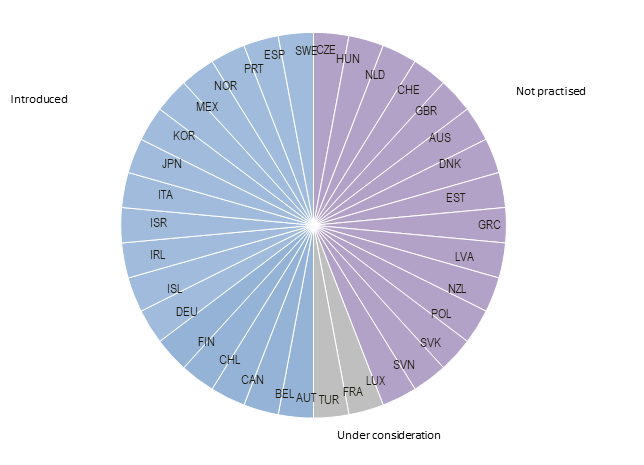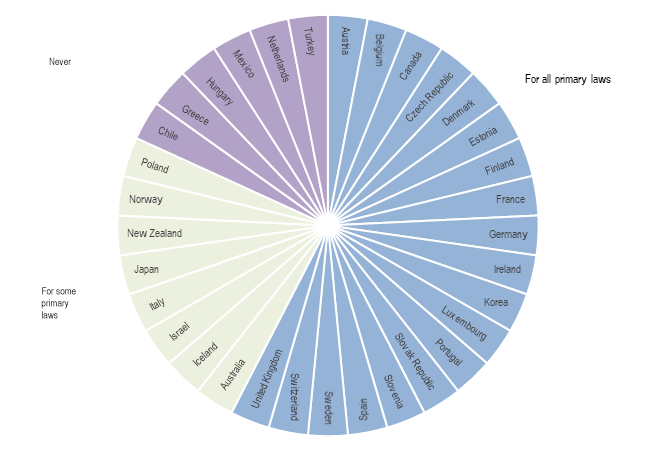Increasing use of gender mainstreaming tools across the OECD
March 2019 - Tools and levers such as structural policies, budgets, regulatory frameworks, and procurement processes – when accompanied by gender-sensitive lens – have a strong potential to advance women’s economic empowerment including full participation in the labour market, addressing occupational discrimination and supporting female entrepreneurship and access to finance. Governments are increasingly using their tools and decision-making levers to advance gender equality goals, even though the current pace and scope of these initiatives is far from having a long-lasting impact.
The number of OECD countries that have introduced gender budgeting increased from 12 to 17, from 2016 to 2018. However, implementing an effective and sustainable gender budgeting approach can be challenging because of the different levels of importance given to gender equality by successive governments, fiscal constraints or broader challenges related to implementing new public financial management procedures in government.
Figure 1: OECD countries that practise gender budgeting (2018)

Source: 2017/2018 OECD Budget Practices and Procedures Survey
In addition, over the past decade, a significant and rising number of countries report assessing the gender impacts of regulations, at least formally (30 over 35 in 2017 compared to 13 in 2008). Although many countries have put in place guidelines or checklists, there are generally no criteria or accountability to ensure quality and rigour of gender analysis in regulations. In a majority of instances, there are incentives to increase evidence of how the results of such assessments have been integrated into the regulatory decision-making.
Figure 2: Requirements to assess the impacts of gender equality in developing primary laws (2017)

Source: OECD Indicators of Regulatory Policy and Governance Survey 2017
- International Budget Practices and Procedures Database
- Indicators of Regulatory Policy and Governance
More data on the OECD Gender Data Portal
Related Documents

